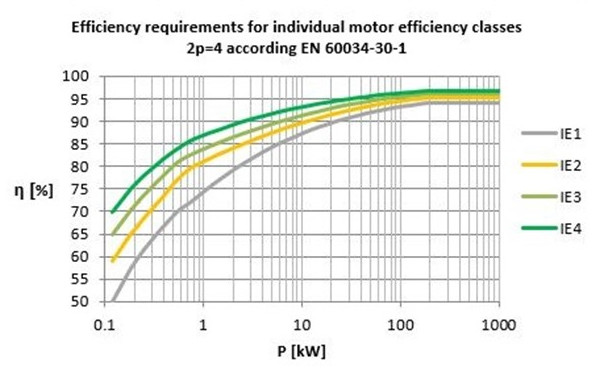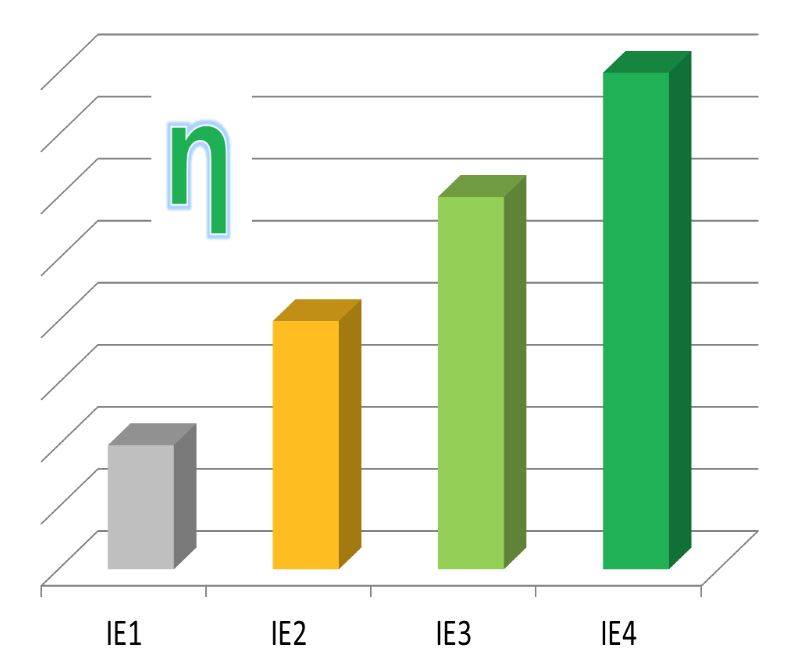New requirements of minimal efficiency level of asynchronous induction motors
New requirements of minimal efficiency level of asynchronous induction motors introduced on the European Union market - Commission Regulation (EU) 2019/1781 togheter with the amendment 2021/341.
The development of broadly perceived industry must not cause any harm to the natural environment. Numerous restrictions concerning emission of harmful gases which results from side processes of energy production (e.g. from coal) stimulate us to search for new sources of energy (esp. renewable source) as well as improve existing devices and industrial processes in order to curb consumption of produced energy. Additional factor which determines above-mentioned actions is a significant rise in demand for electric energy compared with our capacity to produce it.
Approximately 50% of electric energy produced for example in Poland is consumed by driving systems with induction motors. Due to this fact, usage of energy-efficient driving systems equipped with high efficiency induction motors may result in limiting aforementioned negative effects of development as well as ensuring quantifiable savings for its user.
Motor efficiency classes.
The basic rate indicating expected savings arising from use of energy-efficient motors is their efficiency related to efficiency class. In the territory of the European Union, division of induction motors from the perspective of efficiency is performed employing IE classification (International Efficiency) according to EN 60034-30-1:2014 standard.
The classification of a motor to a particular efficiency class is performed by comparison of the motor’s efficiency calculated according to a method set out by EN 60034-2-1:2007 standard to minimal efficiency of a particular IE class.

It should be underlined, that EN 60034-30-1:2014 standard defining efficiency classes of motors (IE) and minimal efficiency values assigned to them, as all other standards, is a document for voluntary use - legal (obligatory) requirements regarding minimal efficiency level for induction motors being introduced on the EU market are specified in a European Parliament and Council Directive and related Regulations.
New European Commision regulation.
In October, 2019, the European Commission published a new Regulation 2019/1781 (which repeals the Regulations 640/2009 and 4/2014) and then its amendment 2021/341 concerning minimal efficiency levels of induction motors as well as variable speed drives that are being introduced on the EU market. The subject Regulation connected with European Parliament and Council Directive 2009/125/WE defines not only minimal efficiency values and efficiency classes associated with them (compatible with IE efficiency classes defined in EN 60034-30-1:2014 standard), but also it defines motor characteristics which are subject to the Regulation (there are certain exclusions).
|
New Commission Regulation EU 2019/1781 and 2021/341 regarding minimum efficiency of electric motors – scope of validity |
|
|
Type of motors |
|
|
Voltage |
50V ÷ 1000V |
|
Frequency |
50Hz, 60Hz or 50Hz/60Hz |
|
Rated power |
0,12kW ÷ 1000kW |
|
Duty |
S1, S3≥80 %, S6≥80 % |
|
Number of poles |
2p=2, 4, 6, 8 |
|
Efficiency class |
|
|
Ambient temperature |
-30°C ÷ +60°C |
|
Cooling water temperature (for motors with water cooling) |
0°C ÷ +32°C |
|
Altitude |
till 4000 m a.s.l. |
|
Motors excluded from new Regulation |
|
|
|
The new European Commission Regulation 2019/1781 togheter with the amendment 2021/341 introduces several changes and challenges for induction motor manufacturers and their users. The most important is obligatory efficiency in IE3 class for explosion-proof motors (excluding motor for mining industry), specification of minimal IE4 efficiency class for motors with power range from 75kw up to 200kW and introduction of IE3 level for motors supplied from VFD power supply (exclusion of the possibility to introduce on the market IE2 efficiency class motors supplied by VFD)– detailed requirements along with due date are listed in the below table.
|
Type of motor |
Efficiency class |
General purpose motors |
Ex motors except motors for mining |
|
|
Increased safety (Ex eb) |
Others |
|||
|
3-phase |
IE2 |
2p = 2, 4, 6, 8 & 0,12kW ÷ <0,75kW |
2p = 2, 4, 6, 8 & 0,12kW ÷ 1000kW |
2p = 2, 4, 6, 8 & 0,12kW ÷<0,75kW |
|
from 2021-07-01 |
from 2023-07-01 |
from 2021-07-01 |
||
|
IE3 |
2p = 2, 4, 6, 8 & 0,75kW ÷ 1000kW |
N/A |
2p = 2, 4, 6, 8 & 0,75kW ÷ 1000kW |
|
|
from 2021-07-01 |
from 2021-07-01 |
|||
|
IE4 |
2p = 2, 4, 6 & 75kW ÷ 200kW |
N/A |
N/A |
|
|
from 2023-07-01 |
||||
|
1-phase |
IE2 |
≥0,12kW |
||
|
from 2023-07-01 |
||||
The subject Regulation (EU) 2019/1781 referring to minimal efficiency level also defines requirements for Member States pertaining to verification of energy efficiency of motors available on the market and guidelines for manufacturers on technical documentation attached to the motors.
Full content of the Regulation and amendment is available on the European Commission’s website.
Based on an analysis carried out by the European Commission, it has been estimated that the subject induction motor efficiency requirements (defined by the new Regulation) would lead to limitation of annual electric energy consumption by approximately 10TWh and decrease of annual greenhouse gases emission by 3 Mt equivalent of carbon dioxide to year 2030.
Prepared by: mgr. inż. Adam Owczarzy

